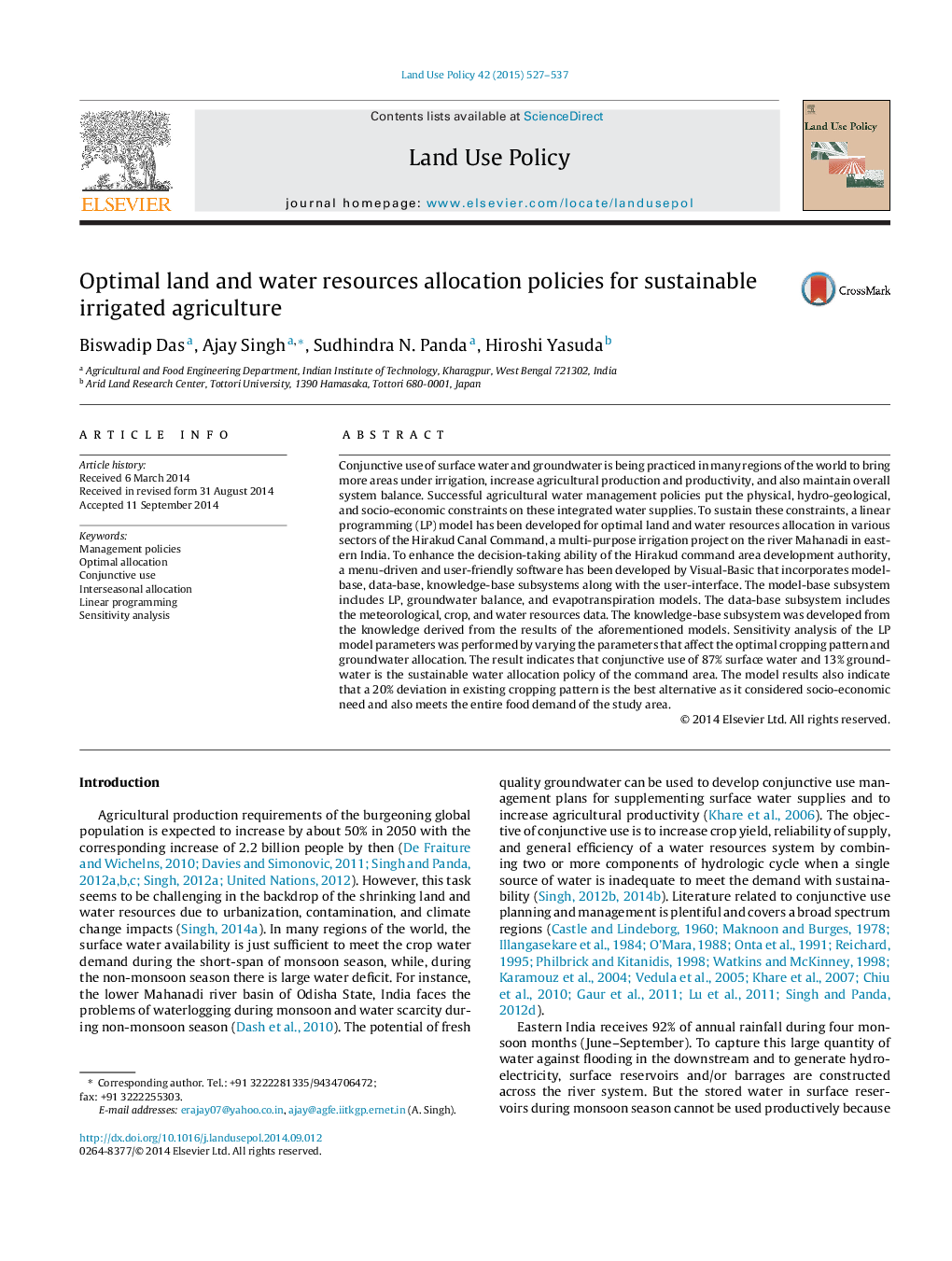| Article ID | Journal | Published Year | Pages | File Type |
|---|---|---|---|---|
| 6548454 | Land Use Policy | 2015 | 11 Pages |
Abstract
Conjunctive use of surface water and groundwater is being practiced in many regions of the world to bring more areas under irrigation, increase agricultural production and productivity, and also maintain overall system balance. Successful agricultural water management policies put the physical, hydro-geological, and socio-economic constraints on these integrated water supplies. To sustain these constraints, a linear programming (LP) model has been developed for optimal land and water resources allocation in various sectors of the Hirakud Canal Command, a multi-purpose irrigation project on the river Mahanadi in eastern India. To enhance the decision-taking ability of the Hirakud command area development authority, a menu-driven and user-friendly software has been developed by Visual-Basic that incorporates model-base, data-base, knowledge-base subsystems along with the user-interface. The model-base subsystem includes LP, groundwater balance, and evapotranspiration models. The data-base subsystem includes the meteorological, crop, and water resources data. The knowledge-base subsystem was developed from the knowledge derived from the results of the aforementioned models. Sensitivity analysis of the LP model parameters was performed by varying the parameters that affect the optimal cropping pattern and groundwater allocation. The result indicates that conjunctive use of 87% surface water and 13% groundwater is the sustainable water allocation policy of the command area. The model results also indicate that a 20% deviation in existing cropping pattern is the best alternative as it considered socio-economic need and also meets the entire food demand of the study area.
Related Topics
Life Sciences
Agricultural and Biological Sciences
Forestry
Authors
Biswadip Das, Ajay Singh, Sudhindra N. Panda, Hiroshi Yasuda,
